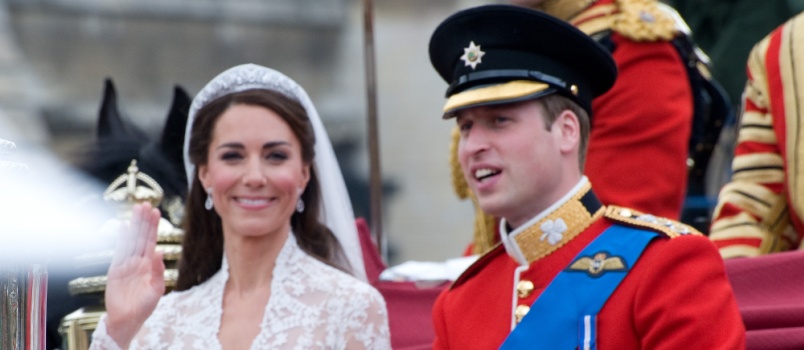What Is a Morganatic Marriage: 7 Fascinating Facts to Know

Unlock Daily 30-Sec Tips for a Happier Relationship
👉 Subscribe FREEKey Takeaways
Marriage.com AI Quick Summary
It’s a curious word, isn’t it—morganatic? At first glance, it feels heavy, almost secretive, yet behind it lies a world of love, sacrifice, and quiet resilience. Imagine choosing the person your heart longs for, knowing that titles, inheritance, and recognition might slip away… still saying “yes” anyway.
History is filled with such moments—royals who bent rules, families torn between duty and devotion, and whispered stories that shaped dynasties.
Some unions brought scandal, others deep tenderness; all of them remind us that love has never been simple, especially when weighed against crowns, traditions, and the unyielding pull of society.
What is a morganatic marriage?
A morganatic marriage is a legally recognized union between a royal or noble and a person of lower social rank, where the spouse and children do not inherit the titles, privileges, or succession rights of the higher-ranking partner.
In simple terms, to define morganatic: it’s a marriage based on personal choice and love, but stripped of political and dynastic benefits.
A book published in 1919 by Charles Kingston showcases true stories of royal marriages labeled morganatic—unions where partners gave up dynastic privileges and stirred both romance and scandal.
Origin:
- The word morganatic comes from an old Latin and German word morgengabe, which means “morning gift.”
- Long ago, after a wedding night, a husband would give his wife a gift the next morning—like money, land, or jewelry.
- In a morganatic marriage, this “morning gift” was basically the only thing the wife (and their children) could receive. She would not get his titles, power, or inheritance.
- It was a way of saying: “We are married, but you and our children will not be part of my royal or noble status.”
5 key reasons morganatic marriage existed
Morganatic marriage may sound unusual today, but in royal history, it served very specific purposes. These unions weren’t just about love—they were shaped by politics, power, and strict family rules. Here are five key reasons why they existed.
1. To protect dynastic inheritance
Royal families wanted to keep titles, lands, and power within their “pure” bloodlines. A morganatic marriage made sure that the lower-ranking spouse and children could not claim succession rights or noble privileges, protecting the royal family’s future.
2. To allow royals to marry for love
Not every royal wanted to marry for politics. A morganatic marriage gave them a way to choose love without completely breaking the rules. It was a compromise—personal happiness without threatening dynastic order.
3. To avoid political conflicts
Marriages often came with alliances, treaties, or wars. By keeping a marriage morganatic, royals avoided elevating “outsiders” who might bring unwanted political influence or rival claims, reducing the chance of future disputes.
4. To maintain noble hierarchies
Society was deeply hierarchical, and nobles guarded their status fiercely. A morganatic marriage allowed royals to marry someone of lower rank while ensuring that person stayed outside the noble hierarchy. It preserved the family’s social order.
5. To control succession disputes
Without clear rules, multiple heirs could fight for the throne, causing instability. Morganatic marriage provided a legal safeguard by clearly stating that children of such unions had no claim, preventing succession crises before they began.
7 fascinating facts to know about morganatic marriage
The world of morganatic marriage is full of surprising twists—rules that sound unfair today, love stories that defied expectations, and choices that changed royal families forever. Let’s uncover some facts that make this tradition both curious and captivating.
1. Royals could marry for love—but at a price
For royals trapped in arranged marriages, morganatic unions were a loophole to follow their hearts. But the cost was steep—spouses stayed outsiders, and children were denied royal privileges.
A book published by Marie Connor Leighton in 1885 explores a real-life morganatic marriage, offering a deeply personal look at unions where love led royals to give up rank, titles, and inheritance—even amid societal expectations.
Love was allowed, but never without sacrifice.
- Example: Tsar Alexander II’s marriage to Catherine Dolgorukova gave him happiness but shocked the Russian court.
2. Children were royals by blood but not by title
One of the most striking truths is how the children of these unions were treated. They carried royal blood, yet the law denied them succession, inheritance, and sometimes even recognition. Imagine growing up royal, but never really belonging.
- Example: Franz Ferdinand’s children were excluded from the Austrian throne despite their father being the heir.
3. Scandal followed these marriages everywhere
Courts whispered, nobles gossiped, and newspapers loved to stir the drama. Even when legally accepted, such unions were magnets for controversy—seen as bold, rebellious, or downright shameful, depending on who you asked.
- Example: Franz Ferdinand’s marriage to Sophie Chotek was seen as a scandal that humiliated the Habsburg dynasty.
4. Some love stories changed history
These marriages weren’t just personal—they had ripple effects that reached entire nations. A single royal choice could spark conflict, alter succession, or even influence global events. Love, in these cases, truly shaped history.
- Example: The assassination of Franz Ferdinand, who had a morganatic marriage, triggered the events leading to World War I.
5. It protected dynasties—but hurt families
The whole idea of a morganatic marriage was to protect dynastic purity. But in doing so, it tore families apart—keeping wives and children outside the noble circle, and forcing royals to choose between duty and affection.
- Example: Many German princes used this system to guard dynasties, even when it meant sidelining their own families.
6. Spouses remained outsiders, no matter what
Even after years of marriage, the lower-ranking partner stayed an outsider. They couldn’t share titles or privileges, often living in the shadow of their royal spouse. The imbalance was permanent, and it left many couples struggling for dignity.
- Example: Countess Claudine Rhédey, wife of King Alexander of Württemberg, lived her life outside full royal recognition.
7. The tradition has vanished—but its echoes remain
Today, monarchies no longer recognize these unions. Royals can marry commoners without fear of exclusion. Still, the history of these marriages lingers as a reminder of how strict social rules once governed even the most personal choices.
- Example: Modern royals like Prince William freely married Catherine Middleton without restrictions—something impossible under morganatic law.
Watch this: a breathtaking documentary tracing how royal weddings evolved—from strategic alliances to romantic spectacles—highlighting changing traditions, dramatic gowns, and the growing emotional bond with the public.
Do morganatic marriages still exist?
No, morganatic marriages no longer exist in today’s monarchies. Most European royal families have abolished this practice as societies modernized and embraced equality in marriage.
To put it simply, if you define morganatic, it means a union where the lower-ranking spouse and their children were excluded from royal titles and inheritance.
While the idea may sound unfair now, the history of morganatic marriage still fascinates because it reveals how love and tradition once collided in powerful families.
FAQ
Even after learning the history, people often have lingering questions about how morganatic unions worked in practice. Here are some lesser-known answers that go beyond the basics.
-
Could a morganatic spouse ever gain royal status later?
Rarely. In most cases, the lower-ranking spouse remained outside royal status for life. Only if laws changed—or a monarch made a special exception—could their standing improve.
-
Were morganatic marriages unique to Europe?
Yes, they were largely a European custom. Other cultures had their own ways of limiting inheritance or controlling marriage, but the specific concept of “morganatic” was tied to European nobility.
-
Did morganatic unions cause conflicts within families?
Absolutely. They often created emotional divides—children felt excluded, and extended families clashed over succession rights. These tensions sometimes spilled into political disputes, making the marriages far more than just private matters.
Love versus duty
The story of morganatic marriage is more than a historical footnote—it’s a reflection of how deeply love and duty can collide. To define morganatic is to see how societies once drew rigid lines between personal happiness and political necessity.
These unions remind us that behind crowns and dynasties were human hearts, often torn between tradition and longing. Though the practice has faded, its echoes still speak to timeless questions: how much are we willing to sacrifice for love, and how much for power?
 Tips
Tips
Write your tip or submit a video tip
All tips are reviewed before the publishing.
Share this article on
Want to have a happier, healthier marriage?
If you feel disconnected or frustrated about the state of your marriage but want to avoid separation and/or divorce, the marriage.com course meant for married couples is an excellent resource to help you overcome the most challenging aspects of being married.
Related Quizzes
Unlock Daily 30-Sec Tips for a Happier, Healthier Relationship
👉 Subscribe FREE on YouTube We'd love your feedback!
We'd love your feedback!
 Expert Q&A
Expert Q&A
Ask your question related to this topic & get the support you deserve from experts.
















 Thanks for your feedback!
Thanks for your feedback!